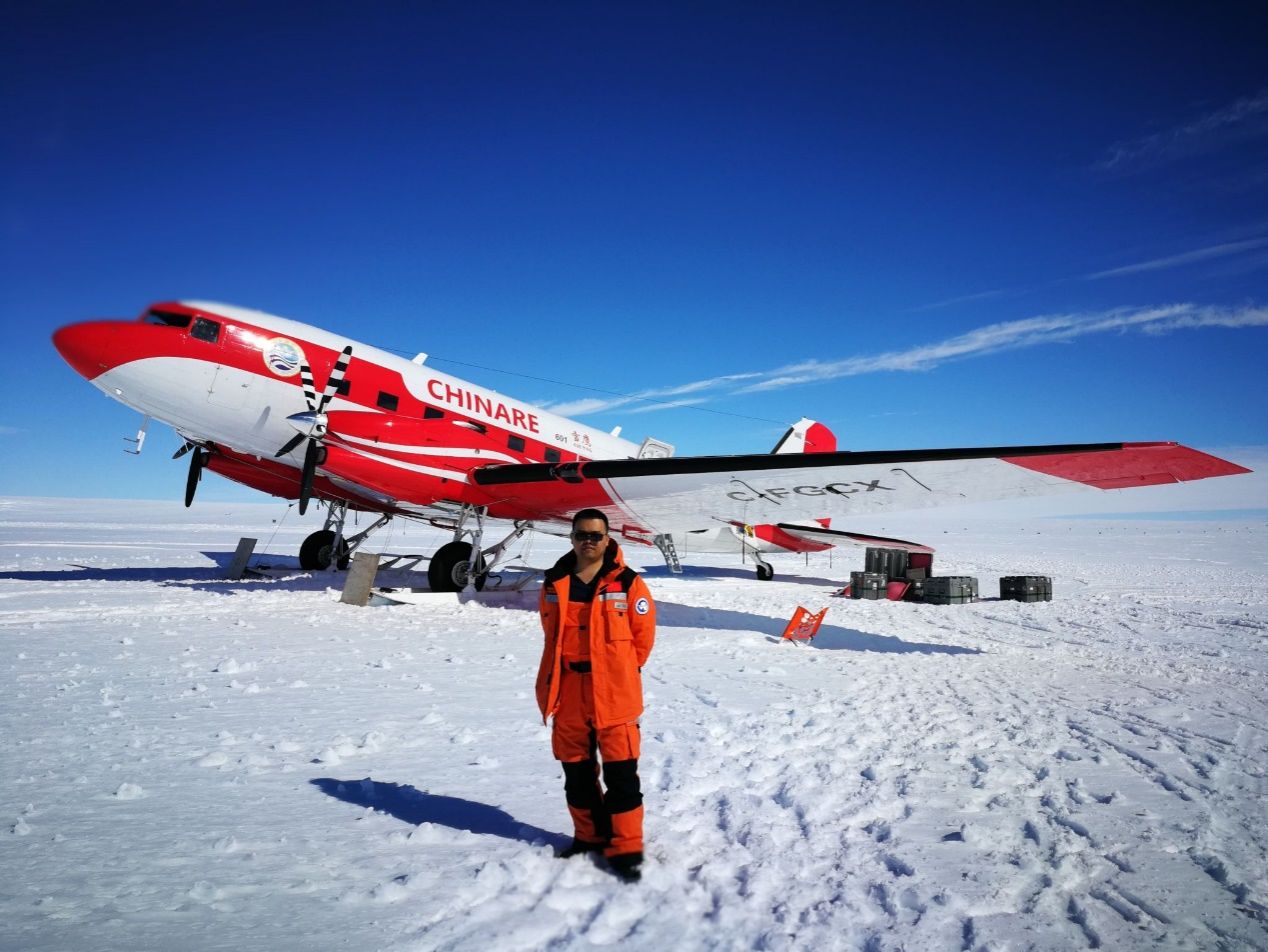Under the surface of the mysterious and far-off cold continent of Antarctica, which is blanketed by an ice sheet that is more than 2,400 meters thick on average, are many beautiful subglacial lakes in a variety of shapes. Using a revolutionary analytical technique, Chinese scientists have discovered 46 new subglacial lakes beneath the East Antarctic ice sheet. This significant discovery highlights an advance in China's polar science study.The research was jointly conducted by CUG team led by Prof. FU Lei from the School of Geophysics and Geomatics, the team from the Key Laboratory of Polar Science, MNR, Polar Research Institute of China, and the team from the Department of Earth and Space Sciences, Southern University of Science and Technology.The associated research paper has been published in The Cryosphere.

Prof. FU in China’s 36th Antarctic expedition in 2019
Subglacial lakes originate at the foot of the Antarctic ice sheet when meltwater flows over its underside, pools in depressions, and gathers at the point of lowest hydraulic head. According to current statistics, 3 subglacial lakes have been dug and sampled out of the 675 subglacial lakes that scientists have found beneath the Antarctic ice sheet. Studying Antarctic subglacial lakes holds significantimplications for understanding ice sheet dynamics, sedimentation processes, subglacial geochemical environments, and the evolution of life.
Ice-penetrating radar (IPR) can be used to detect the sub-surface features of ice sheets. With the increase in IPR data, automatic and semi-automatic methods based on experts’ experiencemay lead to potentially inaccurate detections.
The researchers train the Variational Auto-Encoder (VAE) to reconstruct the one-dimensional waveform features of basal reflectors, analyze similar reflection features, and separate them into different clusters. They focus on the dataset from the Gamburtsev Subglacial Mountains region, and the results reveal that a total of 46 narrower subglacial lakes were overlooked in visual detection in previous studies.
Experts in the industry believe that this VAE clustering method for automatically detecting Antarctic subglacial lakes will not only significantly improve the detection efficiency and accuracy of subglacial lakes but also has the potential to be extended to detect and label more types of Antarctic subglacial environments, providing technical support for in-depth study on the bottom and internal structure of the Antarctic ice sheet.
Title: Deep clustering in subglacial radar reflectance reveals subglacial lakes
Link: https://tc.copernicus.org/articles/18/1241/2024/tc-18-1241-2024-discussion.html
(Edited and translated from the Chinese version)